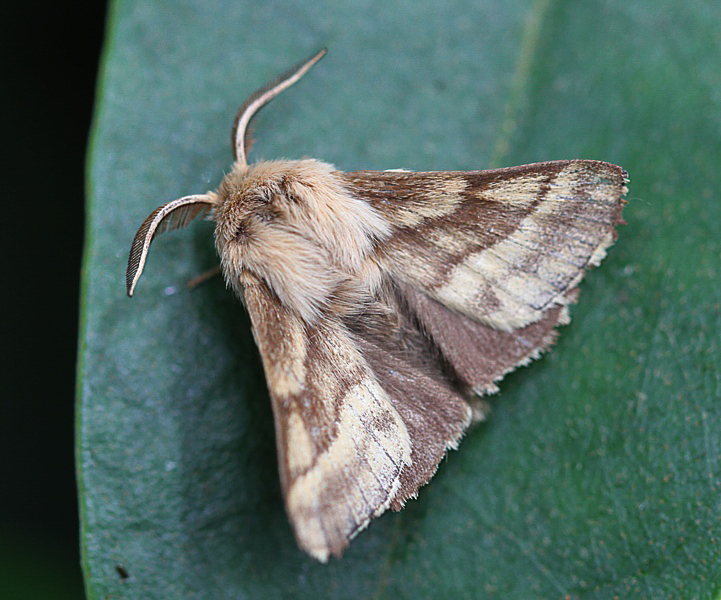
Photo © Ed van der Es
Malacosoma castrense (or Malacosoma castrensis), the ground lackey, is a moth of the family Lasiocampidae. It is a tent caterpillar found in Europe. The species was first described by Carl Linnaeus in his 1758 10th edition of Systema Naturae. The moth's habitats are salt marshes and estuaries.
The habitat is salt marsh and estuary. It is not particularly common due to this specialist habitat, but neither is it a threatened species.
Eggs are laid in rings around plant stalks, and can survive immersion in salt water. The blue-grey larvae feed on various shrubs and herbaceous plants such as heather, cypress spurge, and Lotus species, and other plants found in their habitat except grasses, but they can be fed apple or hawthorn foliage in captivity. The ground lackey larva is a tent caterpillar. which makes a new tent with each moult. Fully-grown caterpillars are fast walkers. The pupa is not cocooned.
Adults fly from June to August, depending on the location. The length of the forewings is 13–16 mm for males and 17–21 mm for females. They fly at night.
Source: Wikipedia
The primary larval foodplants are Common Sea-lavender (Limonium vulgare), Curled Dock (Rumex crispus), Golden-samphire (Limbarda crithmoides), Grass-leaved Orache (Atriplex littoralis), grasses, Sea Arrowgrass (Triglochin maritima), Sea Campion (Silene uniflora), Sea Plantain (Plantago maritima), Sea Wormwood (Artemisia maritima), Sea-purslane (Atriplex portulacoides), Thrift (Armeria maritima), Wild Carrot (Daucus carota ssp. carota) and willows (Salix spp.).